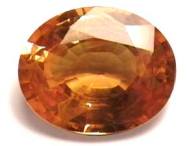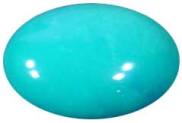|
|
When considering the gem, the properties of the stone can very tremendously. This is because unlike other groups of objects, such as wood, metals, even minerals, the requirements for something being a gem stone are very arbitrary.

It is a gem stone because someone says it is. It's pretty, it makes nice jewelry, and it sells at a higher price than other stones and rocks.
Nevertheless, the study of gem stones properties is very important to both the gemologist and gem collector, and can be divided into basic groups:
Gem Stones Properties – Composition:
This can be the most difficult to determine, but is critical to the classification of a gem based on the properties of the stone.
A gem stone can be:
- Mineral based, like the diamond (carbon) and the ruby.
- Organic based, like amber, which is fossilized tree sap.
The chemical composition of the gem stone determines most of the other properties including hardness, strength, shape and, most of all, color.
Gem Stone Properties – Hardness:
Hardness is defined as the relative resistance to being scratched. This property is usually the first test applied to any gem stone when trying to determine its identity.The ten point Mohs hardness scale is perhaps the most commonly used:
Softest
- Talc
- Gypsum
- Calcite
- Fluorite
- Apatite
- Feldspar
- Quartz
- Topaz
- Corundum(Rubies and Sapphires)
- Diamond
Gem Stone Properties – Structure:
Gem stones come in two basic structural varieties:- Crystalline: A gem has the properties of a crystalline stone when the entire structure of the stone is a single crystal. Since large crystals are rare, this makes the size of a crystalline gem stone a key factor in the value of the stone.
In addition, the shape (or morphology) of the crystal is very important both in identifying the gem stone, as well as determining how it can be cut for presentation.
Diamonds, rubies and emeralds are examples of crystalline gem stones.
- Amorphous: These stones are hard mixtures which may have components which are crystals, the mixture itself is not. This does not take away from the beauty of the stone, however. Two of the primary examples of amorphous gem stones, turquoise and jade, are among the most lovely and sought after of all gems.

Gem Stone Properties – Color:
Though most gems have a typical or signature color (red rubies, blue sapphires, green emeralds), almost all show significant color variation based on the ration of components in their chemical makeup.A notable exception is the peridot, which is always a yellowish green stone.
Gem Stone Properties – Specific Gravity:
This refers to the comparison of the weight of an object in air and water.While not of much interest to the gem collector or enthusiast, it is a very important test for a gem stone identification, particularly if you don't want to test the gem on properties of the stone such as hardness that might damage the surface.
Gem Stone Properties – Effect on Light:
Refraction, reflection, absorption, diffusion, opalescence, iridescence and fluorescence are all fancy scientific terms for the way light is affected by the gem stone.These gem stone properties are important to the gemologist for identification and classification of the stone.
They are important to the collector as well. Even though they might not know the scientific terms, the brilliance, shine, luster and play of light are what makes many gems appealing.
The star of the star sapphire and star ruby is actually a trick of the light when striking the surface of the stone. Pleochroism is another fancy term for a stone, like the alexandrite, that changes color in different lighting conditions.
Gem Stone Properties – Miscellaneous Physical Properties:
Other aspects of gems and the properties of the stone include magnetic, resistance, conductance, and their effects on electromagnetic waves are of little interest to those who value gem stones as a part of a beautiful piece of jewelry more than as a component in a circuit or a the focal point of a laser.